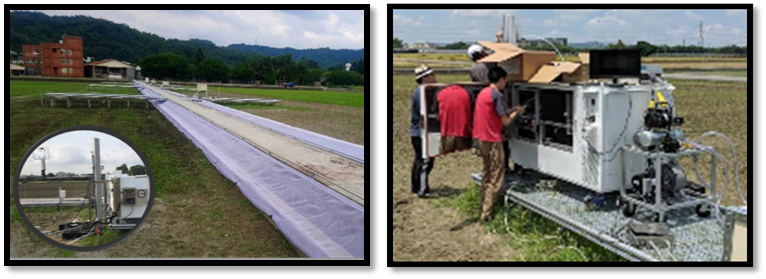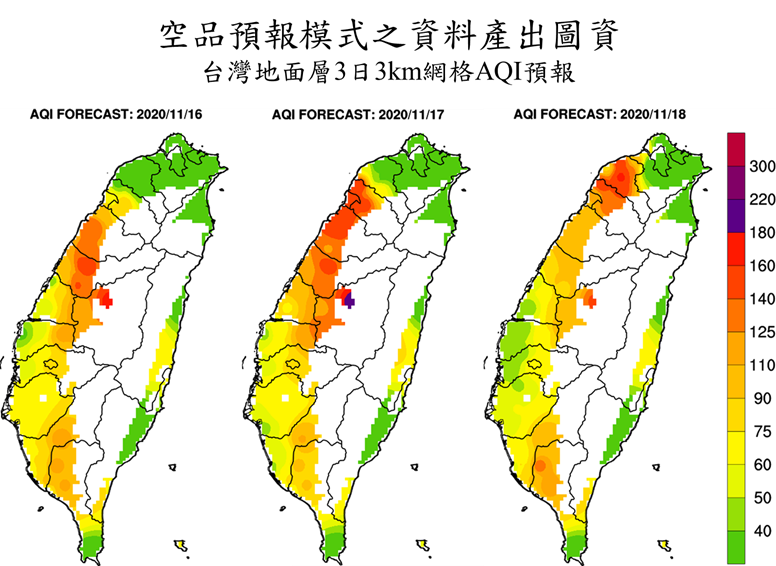Thematic Project 1 Diagnosis and Attribution of Air Pollution in Central-Western Taiwan
This is the flagship project of AQRC, which is supported by the Grand Challenge Program of Academia Sinica. We have identified some knowledge and/or technical issues that prevented us from formulation of an effective air pollution control strategy in Taiwan, which include uncertainties in emission inventory, poor understandings in local circulations and the photochemical production of secondary air pollutants. An integrated approach is proposed accordingly to investigate emissions, transport, and production/transformation of air pollutants. The data will support in-depth studies on the emission inventory, PBL structure and dynamics, and production of secondary air pollutants (O3 and PM2.5). The outcomes of this study will contribute crucial data and knowledge to the formulation of effective mitigation strategies of air pollution in the Central-Western Taiwan. Furthermore, the outcomes of this study will stimulate knowledge fusion among traditional PBL meteorology, atmospheric chemistry, and space sciences, which could in turn provide new perspectives in urban planning.
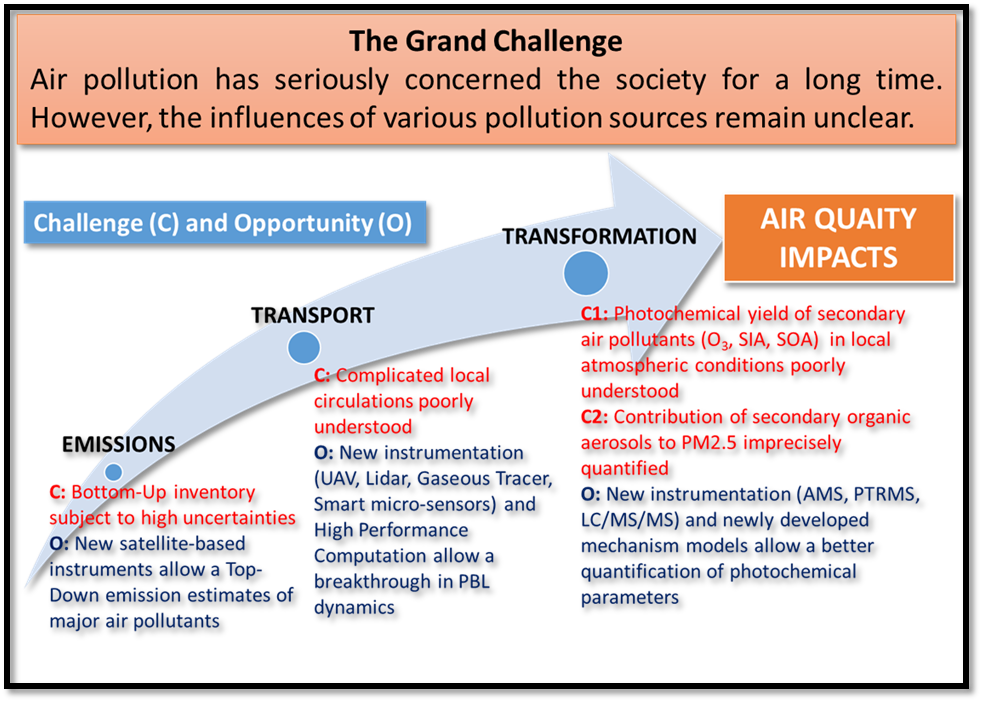
Thematic Project 2 Development of High-Resolution Air Quality Forecast and Diagnosis Model
This is a representative project that bridges our scientific capability to the needs of the society. In order to improve the air quality forecast service in Taiwan, the Ministry of Science and Technology launched a mission-oriented program in 2017. The RCEC team is assigned to be in charge of developing an air quality forecast/diagnosis system, which is based on atmospheric chemistry and transport models and thereby is able to simulate and reproduce the sophisticated processes for air quality deterioration. During the last four years, the outcomes of this project have significantly improved the operational forecast of Air Quality Index over Taiwan. In the next 4 years, our on-going tasks aim at further improvement in the spatial resolution of air quality forecast and development of tools for management of urban air quality.
Thematic Project 3 Effect of Megacities on the Transport and Transformation of Pollutants on the Regional and Global Scales - Asia (EMeRGe-Asia)
Urban air pollution is among the common issues faced by both the developing and developed countries. Due to the rapid industrialization in the last 20 years, the East Asia (particularly China) has become one of the major source regions of air pollutants in the world. The EMeRGe is an international project funded by the German Research Foundation (DFG) and led by the scientists of the University Bremen . The East Asia is one of the major study areas of this project and thereby a local research group is essential to the research project. RCEC has participated the EMeRGe as an international member since the planning phase of the EMeRGe in Asia. Finally, the EMeRGe-Asia had had Taiwan as the local base and a high precision atmospheric chemistry experiment was performed in the spring of 2018. The Germany group conducted 10 research flight missions on the HALO research aircraft in the EA continental outflow regions, and RCEC scientists conducted complementary ground-based investigations of air pollutants and planetary boundary layer dynamics, as well as forecast of the continental pollution outbreaks and the transport path, which was essential to the planning of research flight missions. The outcomes of this study will contribute to not only the scientific understandings of the atmospheric composition and processes but also the assessment of the influences of regional air pollution to the local air quality in Taiwan. Moreover, this project has setup a strong linkage between the Taiwan and Germany research communities. Further Taiwan-Germany collaboration on the atmospheric sciences are expected in the future.
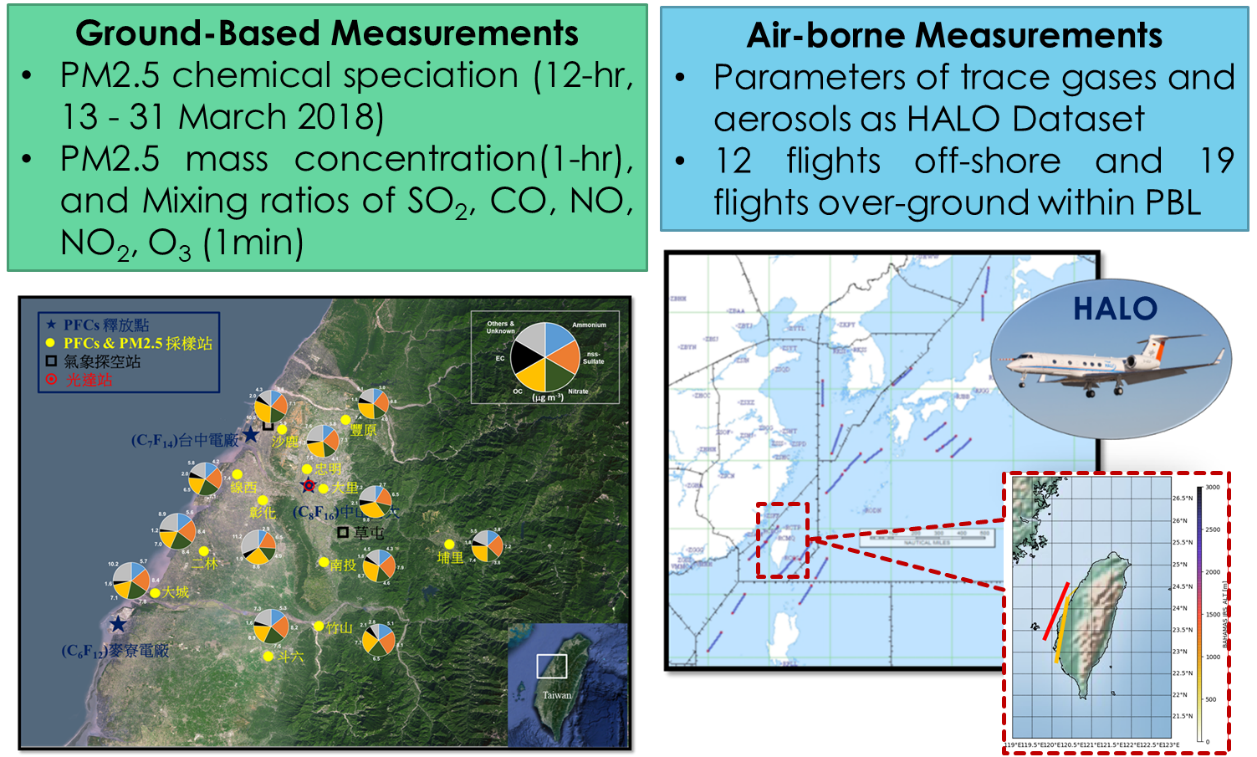
Thematic Project 4 Formation and Transport of Air Pollutants around Megacities in Taiwan
The aim of this project is to improve our understandings on the formation and transport of urban air pollutants in Taiwan and, in turn, the relevant impacts upon the environment in the outskirt areas of a megacity. During the last 5 years, a series of observation and simulation experiments were conducted in the western Taiwan, where a vast amount of air pollutants was emitted. The results of this study revealed that photochemical oxidation of SO2/NOx/VOCs was responsible most for the high PM2.5 levels over the western Taiwan. Furthermore, it was found that the local circulations like sea breezes and the orographic winds transported the urban air pollutants into the forested areas on the western slope of the Central Mountain Range of Taiwan, which then interacted chemically with biogenic VOCs and resulted in production of biogenic secondary aerosols. The intrusion of urban air pollution could have caused changes in the amount and hygroscopic properties of aerosols over the mountainous areas in Taiwan.
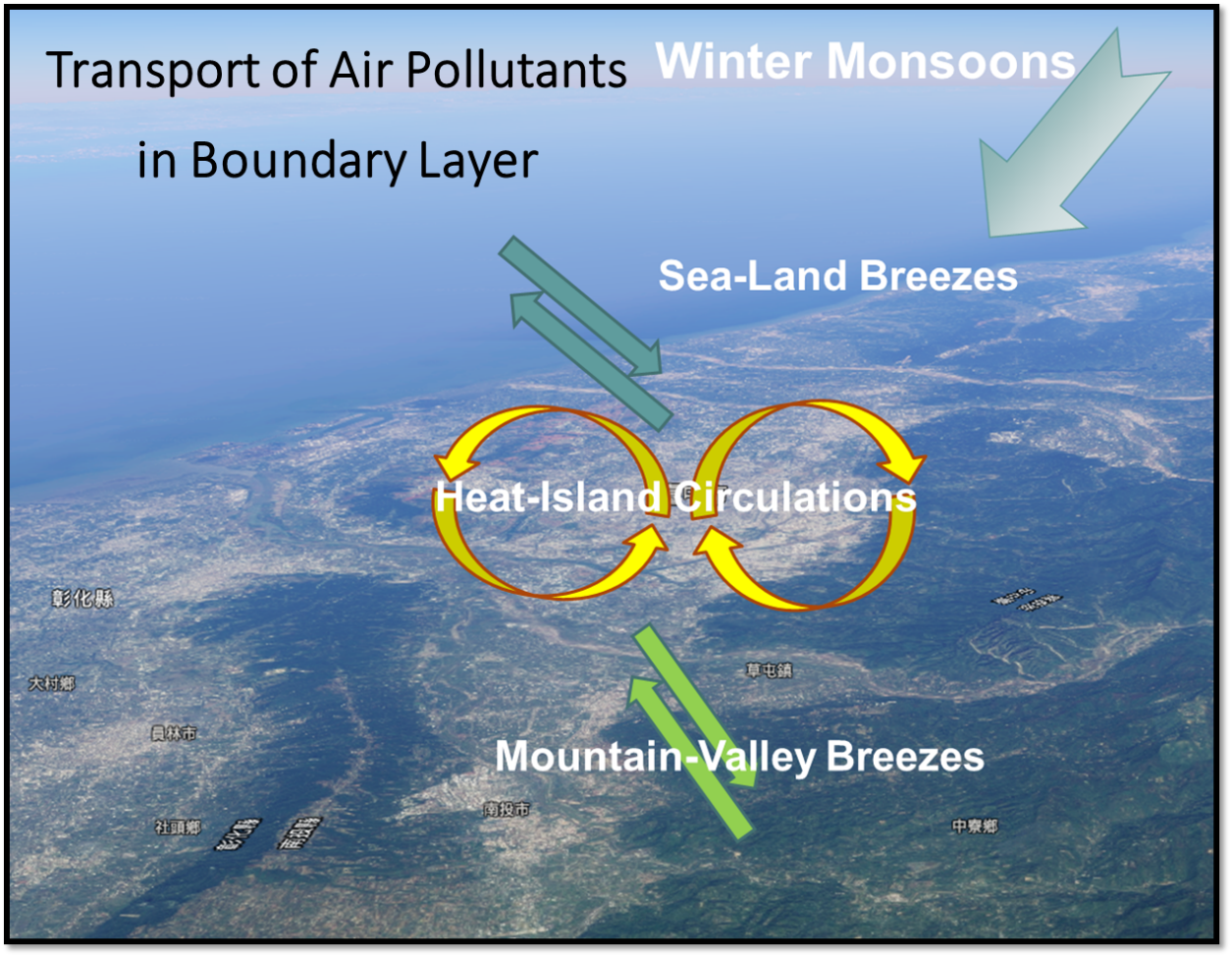
Thematic Project 5 Emissions of Reactive Nitrogen Species due to Fertilization and Its Impacts to Air Quality
Air pollution due to high levels of fine particulate matters (i.e. PM2.5) and ozone (O3) is one of the key factors that strongly influence the health of people in Taiwan. Previous investigations indicated that the air quality over the agricultural counties of Taiwan suffered seriously from elevated levels of nitrate aerosols and ozone, in spite of the relatively low emissions of NOx from industry and transportation sectors over there. This study aims at helping resolve the paradox of air pollution in the agricultural areas of Taiwan. Considering the extremely high density of N-fertilizers applied to agricultural soils in Taiwan, this study hypothesizes that emission of reactive nitrogen species from fertilized soils is substantial and responsible to a certain degree for the unusually high levels of nitrate aerosols and ozone over the agricultural areas. To test this hypothesis, we set up research facilities in the experimental farm of Taiwan Agricultural Research Institute (TARI) in 2019. During the period of 2019 – 2020, there have been four field experiments carried out to investigate the emissions of N-species from fertilized soils in a Chinese cabbage (Brassica rapa chinensis) farm and a rice paddy. The preliminary results of this study have showcased substantial emissions of NO and HONO from fertilized farmlands of vegetables. A regional atmospheric transport and chemistry model with updated land use data from TARI and emission parameters derived from the field investigations has been setup to investigate the air quality impacts of fertilization.
